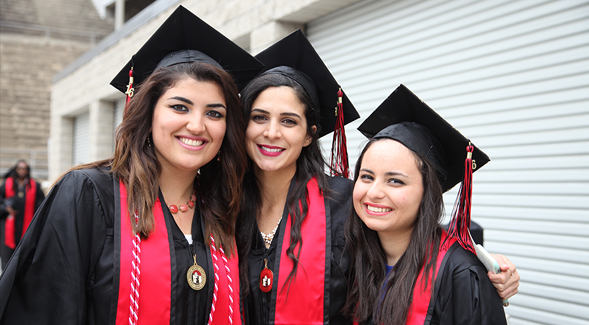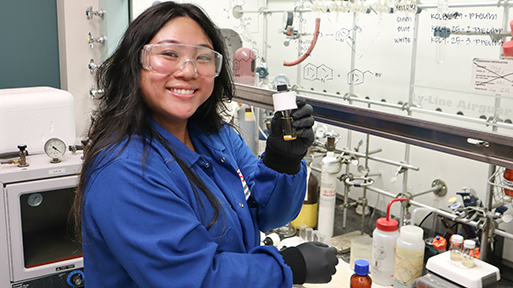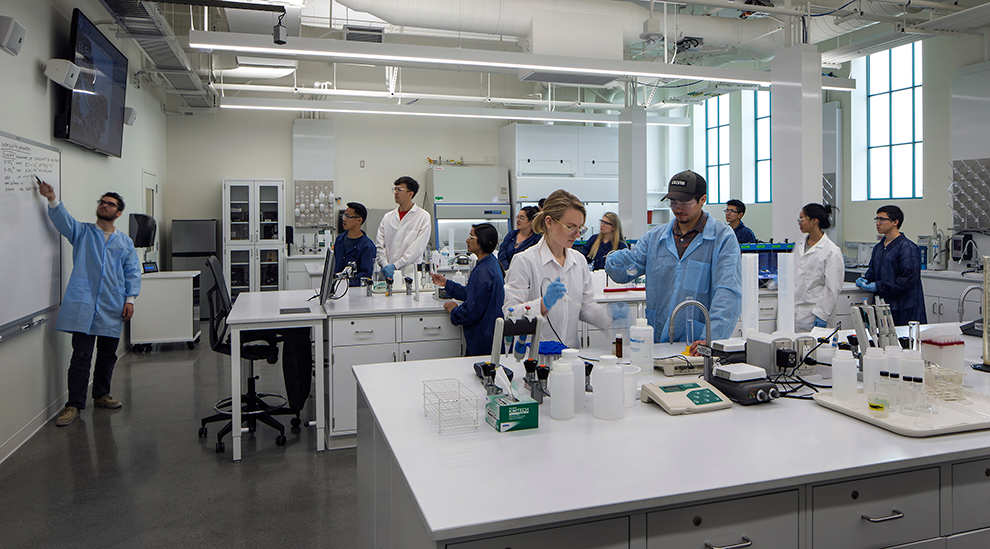SDSU Students Graduating at Record High Rates Across all Colleges
U.S News & World Report ranks SDSU No. 1 in graduation rate performance.

“These numbers underscore the university’s unwavering commitment to our students over many decades.”
San Diego State University students are graduating at record high rates across all seven colleges, and SDSU now ranks No. 1 nationally in graduation rate performance, based on U.S. News & World Report’s most recent college rankings.
The top rank for graduation rate performance acknowledges the university’s success in serving students of many different economic, racial, ethnic and gender affiliations, said SDSU President Adela de la Torre.
U.S. News calculates graduation rate performance by comparing a university’s actual six-year graduation rate to the rate its analysts would expect, given each university’s unique combination of financial resources, admissions data, proportion of economically disadvantaged students and STEM orientation.
U.S. News & World Report adjusted its ranking algorithm this year to include social mobility, thereby advantaging universities that have narrowed the achievement gap—the difference between educational outcomes for low-income and minority students compared to their white peers and students from more privileged socioeconomic backgrounds.
SDSU has received recognition over many years for its steady success in narrowing the achievement gap. A comprehensive analysis of 2003-2013 data by the Education Trust found that SDSU was one of only 26 universities in the nation to have increased six-year graduation rates for all students while also closing the gap between six-year graduation rates for underrepresented students and white students.
The Education Trust report recognized SDSU for cutting the achievement gap in half while simultaneously increasing the population of underrepresented minority students enrolled at the undergraduate level. Since then, SDSU has continued to implement programs and policies aimed at eliminating the achievement gap.
“These numbers underscore the university’s unwavering commitment to our students over many decades,” said de la Torre. “SDSU is a model for what dedicated public universities can do—that is, create inclusive academic environments that marry student success with access, diversity with innovation, and leadership with transformational change."
Four-year graduation rates up sharply
The current six-year graduation rate in the United States is 57 percent, which means that 57 percent of first-time freshmen attending four-year colleges and universities graduate in six years. Based on 2018 graduation data, SDSU’s six-year graduation rate remained steady at a nationally competitive 75.3 percent.
Data from the 2018 graduating class also show a sharp rise in four-year graduation rates—up 8 percentage points to the highest level in recent SDSU history. More than 47 percent of fall 2014 freshmen graduated in four years, compared with 30.1 percent of fall 2009 freshmen.
Four-year graduation rates for STEM majors in the freshman class of 2014 rose markedly—by 10 percentage points for students in the College of Sciences and by 8.3 percentage points in the College of Engineering. Students who entered the College of Health and Human Services in fall 2014 had the largest year-on-year gain with a jump of 20 percentage points in their four-year graduation rate.
Transfer students are also moving more quickly toward graduation. Nearly 55 percent of new upper division full-time transfers who enrolled in 2016 graduated by the end of their second year at SDSU, and two-year graduation rates for these students rose across all colleges.
“Our faculty and academic advisers play a crucial role in guiding students toward graduation,” said Joseph Johnson, provost and vice president for Academic Affairs. “Their commitment to teaching and mentoring gives students the confidence to achieve, sometimes even beyond their dreams.”
More about the U.S. News ranking
In the 2019 U.S. News & World Report overall college rankings, SDSU rose to No. 60 from last year’s No. 68 among public universities, and to No. 127 from No. 140 among national universities overall. More than one-third of a school's rank is based on its ability to retain and graduate students in six years.
The specific graduation and retention rate rankings published by U.S. News & World Report this year considered four factors: average six-year graduation rates; average first-year retention rates (that is, the number of freshmen who return); Pell Grant student graduation rates; and the gap between Pell Grant student graduation rates and non-Pell student graduation rates.
Pell Grant students are those whose families are unable to contribute more than $5,486 annually to higher education expenses, as determined by the federal government. Nationally, only half of Pell Grant students graduate in six years, but the numbers at SDSU tell a different story.
The six-year graduation rate for SDSU’s full-time freshman Pell Grant recipients was 71 percent in 2017, the most recent year for which data are available. That is within a few percentage points of the six-year graduation rate of 77.1 percent for non-Pell full-time freshmen, placing SDSU within an exclusive group of universities that has narrowed the “achievement gap” between these two groups.
“Our improved graduation rates are the result of years of effort to change the university culture and years of investment in programs that benefit all students,” said Eric Rivera, vice president for Student Affairs. “We have substantially narrowed the achievement gap in the last 15 years with the result that all students are on track to graduate and on the road to a successful future.”



